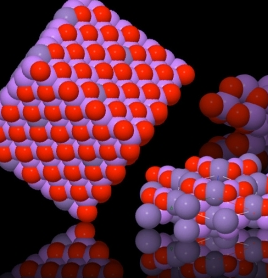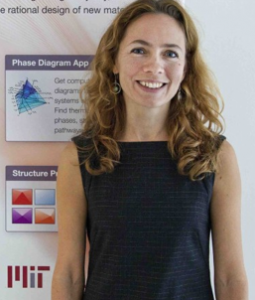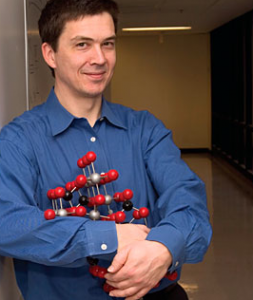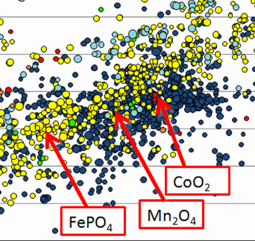
New materials are crucial to building a clean-energy economy--everything from batteries to photovoltaics--but today's development cycle is too slow: 18 years from conception to commercialization. To speed up this process, researchers from Lawrence Berkeley National Laboratory and the Ceder Group at MIT teamed up to develop an easily accessible database.

Now, using a website called the Materials Project, an MIT press release reports, it's possible to explore an ever-growing database of more than 18,000 chemical compounds with a user-friendly web interface that gives all researchers free and easy access.
"Our vision is for this tool to become a dynamic 'Google' of material properties, which continually grows and changes as more users come on board to analyze the results, verify against experiments and increase their knowledge," says Kristin Persson, a Berkeley Lab chemist and one of the founding scientists behind the Materials Project. "So many scientists can benefit from this type of screening. Considering the demand for innovative clean energy technology we needed most of these materials yesterday."

The project is a direct outgrowth of MIT's Materials Genome Project, initiated in 2006 by Professor Gerbrand Ceder as an effort to achieve high-throughput computational analysis of lithium-ion battery cathode materials. Gerbrand says that "First-principles calculations have reached the point of accuracy where many materials properties, relevant for photovoltaics, batteries and thermoelectrics, can be reliably predicted."
It used to require months of work--consulting tables of data, performing calculations and carrying out precise lab tests--to create a single phase diagram showing when compounds incorporating several different elements would be solid, liquid, or gas. Now, such a diagram can be generated in a matter of minutes, Ceder says.
More than 500 researchers have used the new system
The Materials Project is much more than a database of known information, Ceder says:

The tool computes many materials' properties in real time, upon request, using the vast supercomputing capacity of the Lawrence Berkeley Lab. "We still don't know most of the properties of most materials," he says, but adds that in many cases these can be derived from known formulas and principles.
Already, more than 500 researchers from universities, research labs and companies have used the new system to seek new materials for lithium-ion batteries, photovoltaic cells and new lightweight alloys for use in cars, trucks, and airplanes. The Materials Project is available for use by anyone, although users must register (free of charge) in order to spend more than a few minutes, or to use the most advanced features.
Calculating the known universe of compounds
Right now, registered users can store searches as URLs, called permalinks, that make sharing of results natural and easy. Persson and Gerbrand want to open the floodgates to third-party exploratory application mashups, using the Materials Project REST APIand JSON as the common data interchange format.
There are about 100,000 known inorganic compounds, Ceder says; using the computational tools incorporated into this project, "it is now within reach to calculate properties over the whole known universe of compounds." He adds that this achievement makes possible, for the first time, the development of an exhaustive database of material properties derived from the fundamental equations of basic physics.


